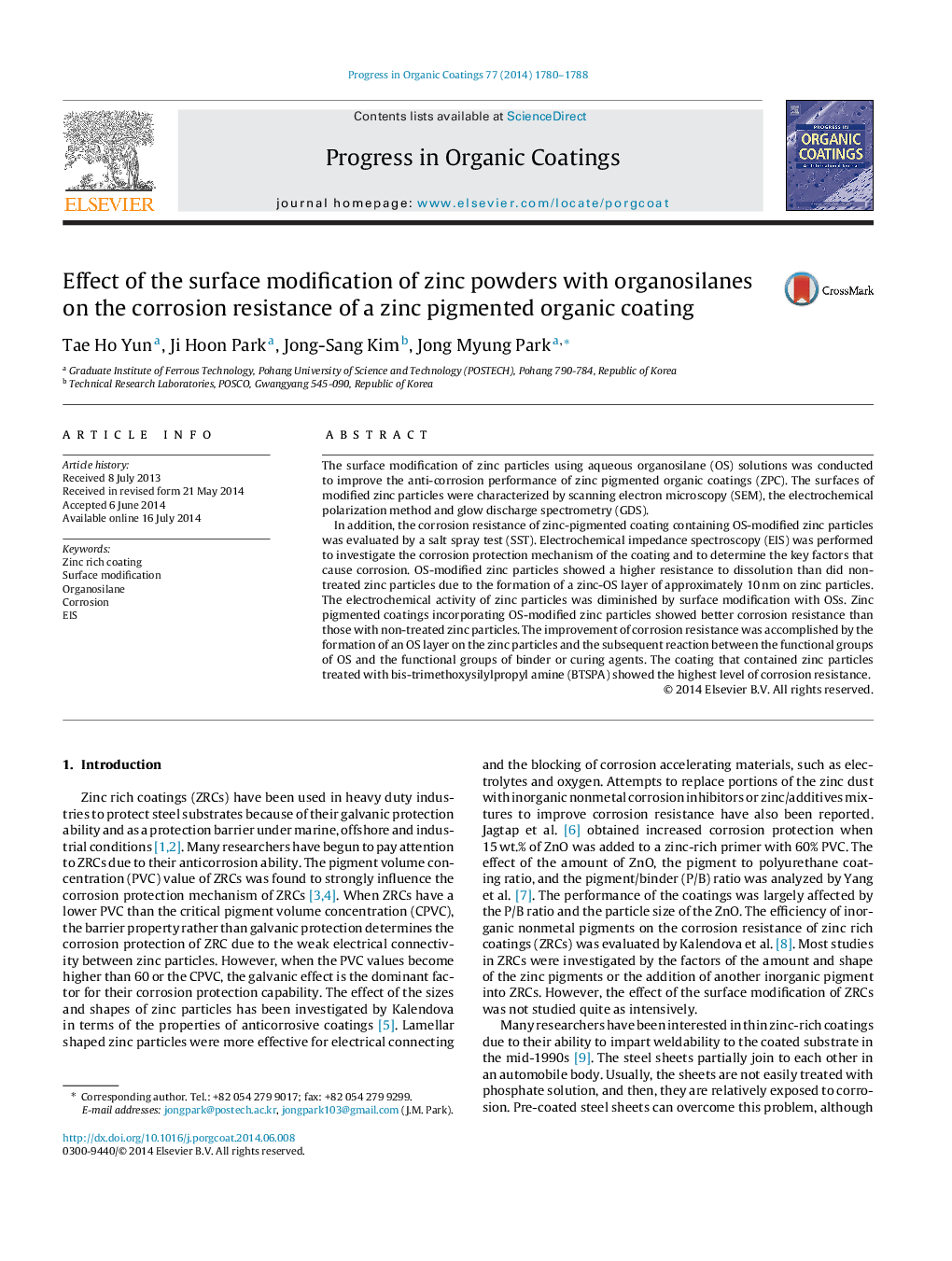| Article ID | Journal | Published Year | Pages | File Type |
|---|---|---|---|---|
| 10397933 | Progress in Organic Coatings | 2014 | 9 Pages |
Abstract
In addition, the corrosion resistance of zinc-pigmented coating containing OS-modified zinc particles was evaluated by a salt spray test (SST). Electrochemical impedance spectroscopy (EIS) was performed to investigate the corrosion protection mechanism of the coating and to determine the key factors that cause corrosion. OS-modified zinc particles showed a higher resistance to dissolution than did non-treated zinc particles due to the formation of a zinc-OS layer of approximately 10Â nm on zinc particles. The electrochemical activity of zinc particles was diminished by surface modification with OSs. Zinc pigmented coatings incorporating OS-modified zinc particles showed better corrosion resistance than those with non-treated zinc particles. The improvement of corrosion resistance was accomplished by the formation of an OS layer on the zinc particles and the subsequent reaction between the functional groups of OS and the functional groups of binder or curing agents. The coating that contained zinc particles treated with bis-trimethoxysilylpropyl amine (BTSPA) showed the highest level of corrosion resistance.
Related Topics
Physical Sciences and Engineering
Chemical Engineering
Process Chemistry and Technology
Authors
Tae Ho Yun, Ji Hoon Park, Jong-Sang Kim, Jong Myung Park,
